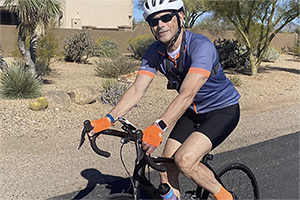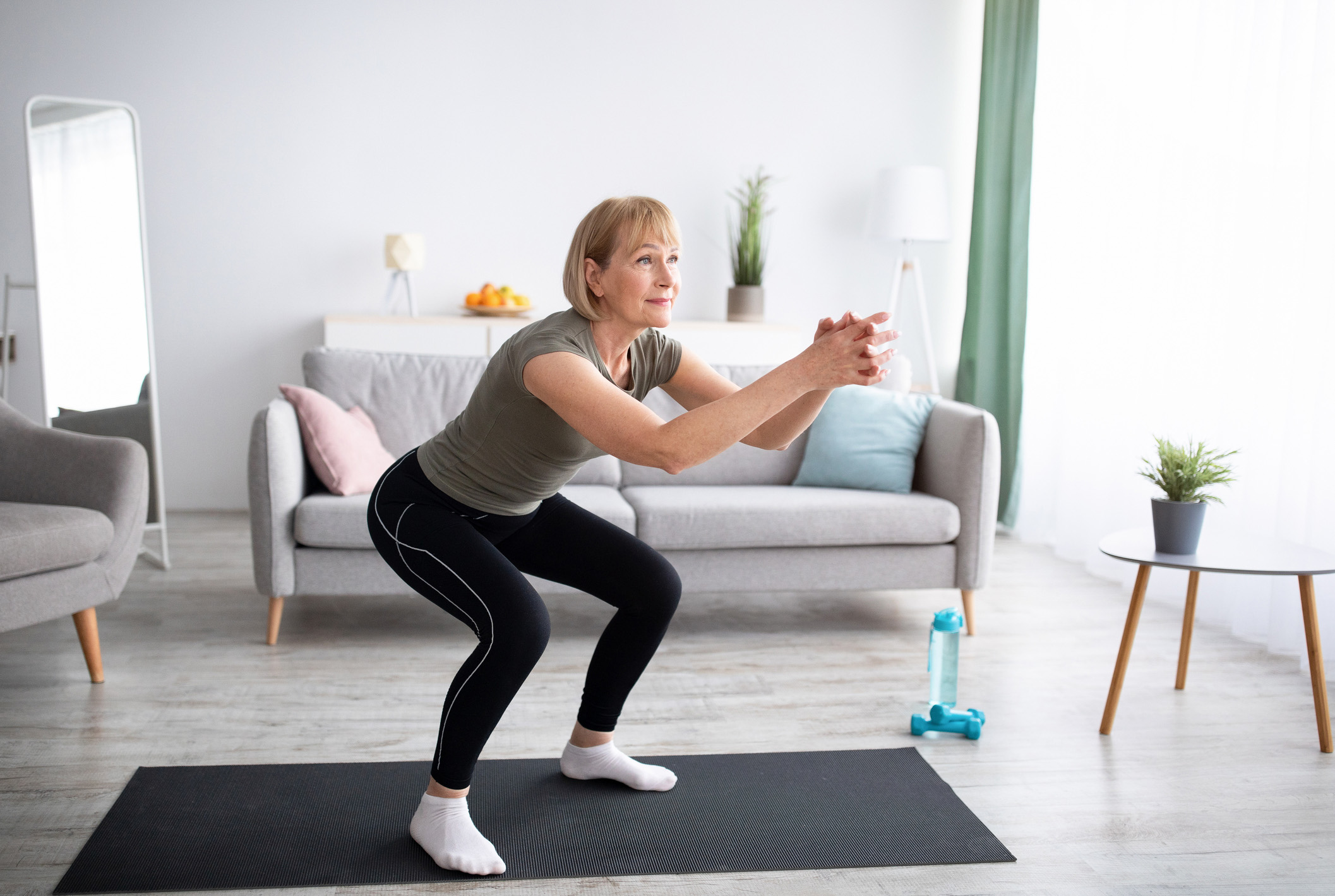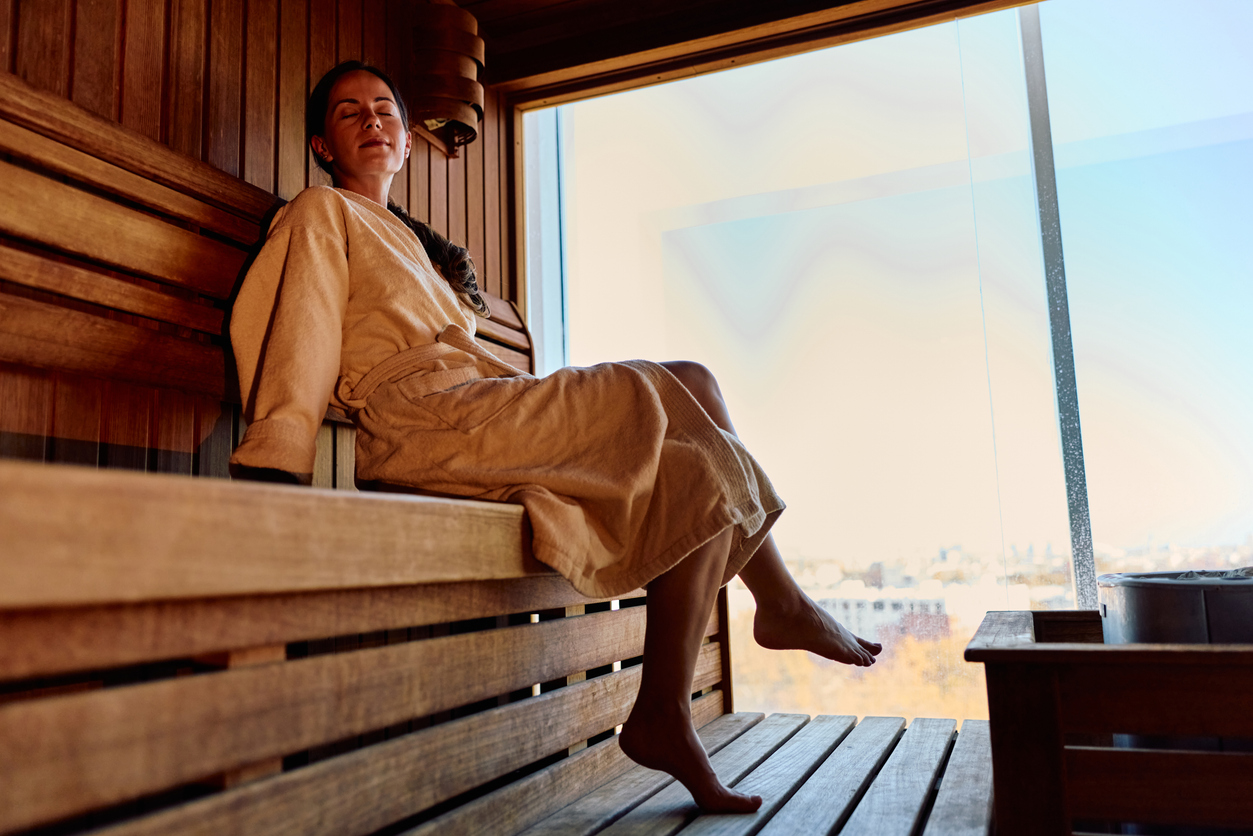This month, tired of the lingering gloomy weather in New York which makes bike riding an ordeal, I signed up for a 5-day Arizona bike tour with Trek Travel.
I flew to sunny Phoenix and traveled to the Civana Spa where our group was lodged. I had apprehensions that I might not be up for the challenge; a couple of the planned rides were 45 miles plus with steep climbs, and I was worried that, despite my hill work in New Jersey, I might not keep up. But the Trek people reassured me that with my fitness level I’d do fine, and I wasn’t even the oldest in our party of 14. A couple of gals were in their 70s, and quite a few were in their 50s and 60s—all intrepid riders.
I was impressed with the individuals in our group. Many were dedicated lifelong amateur athletes, and some, like me, were triathletes. I found myself solidly in the middle of the pack.
The scenery was breathtaking and helped me “embrace the suck” of some long, hard climbs. The payoff was when we crested hills and barreled at breakneck speeds down twisting descents flanked by towering Saguaro cacti and red rock formations.
We were shepherded by experienced guides who shadowed us in a support van, equipped with snacks, hydration, and, presumably, first aid and spare tires and parts. The bikes were provided by Trek, and they were top-of-the-line.
All in all, it was a great way to get a jumpstart on the riding season here in the Northeast.
Let’s talk about the benefits of cycling. Obviously it’s terrific for sustained cardio. Try running or swimming for 3 or 4 hours straight; not easy. On a bike, it’s do-able. Heart rate is generally lower, except on steep climbs. Prolonged effort is easier to maintain.
A review article states:
“The overall health benefits of cycling are tremendous. Cycling reduces the incidence of cerebrovascular accidents, coronary artery disease, hypertension, dyslipidemia, obesity, and diabetes mellitus. Strong inverse relationships have also been demonstrated between commuter cycling and all-cause mortality, cancer mortality, and cancer morbidity among middle-aged and elderly study participants.”
A study published in the BMJ last April found that regular cycling cut the risk of death from all causes by more than 40%, and cut the risk of cancer and heart disease by 45%.
Cycling is low impact, too, which makes it accessible to athletes suffering from knee or foot problems. Several of my fellow cyclists on the Arizona trip were former runners who switched to cycling to minimize stress on their joints and extend their athletic careers.
There is, however, the issue of pressure to the perineum and sitz bones, which can lead to pain, genital numbness and saddle sores. This can be partially alleviated by a professional bike fitting, and a proper saddle. And, no, bulky gel foam seats are not necessarily the answer; they sometimes bunch up and pinch. I have found that it’s not so much about the ideal saddle as it is about steady practice which enables your pelvic bones to adapt. By day three in Arizona, I’d made peace with my hard, narrow perch.
Urban legend has it that cycling increases the risk of erectile dysfunction. But a recent study suggests that instances of cycle-related impotence are few and far between. There’s even some suggestion that moderate cycling can enhance sexual performance by improving circulation and aerobic capacity.
One concern is that exercising or commuting in an urban environment can amplify the effects of air pollution. An active cyclist may be exposed to 4-9 times the particulate matter and volatile hydrocarbons as a car passenger. That’s not the only reason to sidestep highly trafficked areas. After my 2006 hip fracture on a bike, I studiously avoid riding in New York City.
There are also cognitive and mood dividends. Exercise alleviates depression and anxiety by generating endorphins, and improved cerebrovascular circulation may protect the brain. Production of brain-derived neurotrophic factor (BDNF) is upregulated by exercise. Cycling is also a good way to experience nature, with its salutary effects on mood.
Cycling is specifically therapeutic for movement disorders like Parkinson’s Disease. A review article states:
“Conclusively, bicycling is particularly beneficial for the motor performance of PD patients, improving crucial features of gait. Furthermore, our findings suggest that bicycling improves the overall quality-of-life of PD patients.”
Of course, Parkinson’s patients might do well to exercise indoors on stable recumbent bikes to minimize the potential for falls.
There’s even evidence that patients with autoimmune disorders like rheumatoid arthritis, spondylitis, and psoriatic arthritis may benefit from aerobic activities like cycling that obviate joint stress. One review concludes: “ . . . evidence shows that physical activity can lead to less pain, fatigue, and improved mental and activity performance in inflammatory arthritis.”
One consequence of decreased weight-bearing, however, is that cycling is not particularly helpful for staving off osteoporosis. Some research suggests that inveterate cyclists are at slightly higher risk of bone loss, but results vary, with other studies showing female cyclists have better hip bone density.
Finally, in the COVID era, immunity assumes paramount importance. A recent study of active cyclists aged 55-79 demonstrated that regular cycling helped to stave off immunosenescence, the age-related decline of immune surveillance.
There are lots of bike options, from aerodynamic road bikes to upright commuter and hybrid bikes, mountain bikes and gravel bikes for rougher terrain, tandem bikes for two, and even increasingly popular e-bikes. The latter are not without benefit—they simply level out hills, but you still need to keep pedaling, and are good for novice riders, seniors, or those with limitations.
There’s the indoor option, too, with the opportunity to experience virtual group rides and realistic simulations via computer wizardry. And spin classes are a popular way of conditioning when you can’t get on the road.
If you plan on cycling outdoors, invest in a good helmet, make sure you wear colorful reflective clothes, buy battery-powered or rechargeable flashing lights for front and rear visibility, and obey the rules of the road.
Happy trails!







